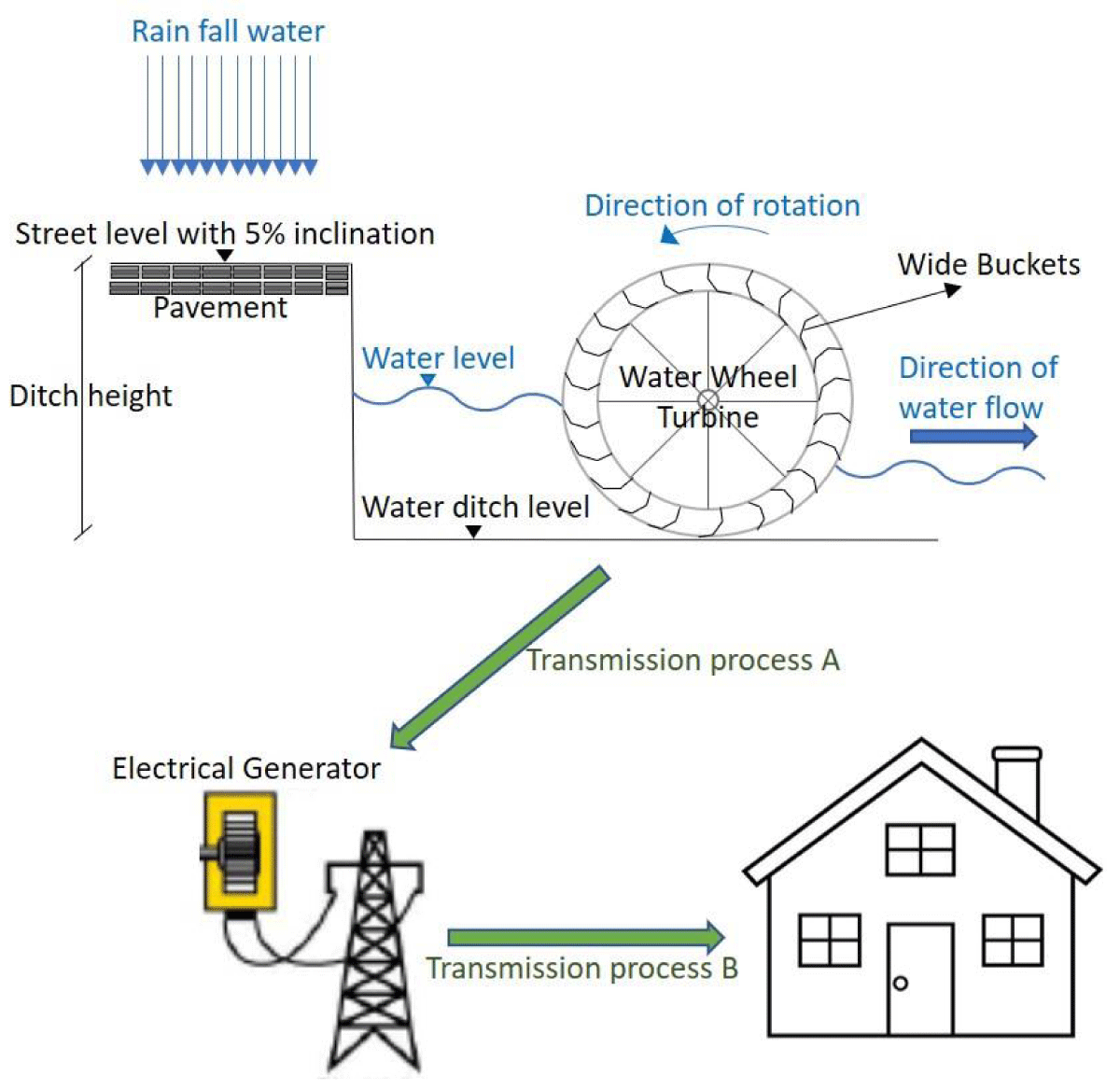More Information
Submitted: Feburary 22, 2022 | Approved: March 03, 2022 | Published: March 04, 2022
How to cite this article: Abdel Rahim KAN*. Generating eco-friendly electricity from rain water. Ann Civil Environ Eng. 2022; 6: 001-002.
DOI: 10.29328/journal.acee.1001032
Copyright License: © 2022 Abdel Rahim KAN. This is an open access article distributed under the Creative Commons Attribution License, which permits unrestricted use, distribution, and reproduction in any medium, provided the original work is properly cited.
Keywords: Design; Eco-friendly; Electricity; Rain water
Generating eco-friendly electricity from rain water
Khalid Abdel Naser Abdel Rahim*
Freelance Researcher in Civil Engineering, Coimbra, Portugal
*Address for Correspondence: Khalid Abdel Naser Abdel Rahim, Freelance Researcher in Civil Engineering, Coimbra, Portugal, Email: [email protected]
A new design system is introduced to generate clean eco-friendly electricity from rain fall water. The majority of traffic roads in the world has constructed water ditches for one aim. This is for the accumulation of rain fall water from the roads. However, another important purpose can be used to produce clean electricity for homes. For example, small water wheel turbines could be installed in the water ditch. Once the rain fall water falls from the traffic road to the ditch by the 5% inclination in the street level, the accumulated water goes inside wide buckets and the water wheel turbines starts to rotate anti-clock wise depending on the direction of water flow. This rotational movement produces eco-friendly clean energy which goes through two transmission processes. The first transmission process (A) acts by transferring the initiated electricity from the water wheel turbines to main electrical generators. While the second transmission process (B) performs by sending the electricity from the main electrical generators to homes. The quantity of eco-friendly electricity in voltage depends on several factors. For instance, the amount of rain fail water, type of pavement, height of the ditch, water level in the ditch, the size of the water wheel turbine and wide buckets. Another major aspect which should be taken into consideration to successfully produce sufficient amounts of electricity is the rainy region. As this system relays completely on the amount of water fall, higher amounts of water fail means higher amounts of generated electricity. The water wheel turbine along with the generator including the cables and their fixtures can be easily installed as long as the main water wheel turbine fits in the water ditch. Moreover, the system can be easily de-installed in case it is not working properly or in the case of few waters falls in the region of installation. On the other hand, the system is considered very economical sufficient and cost effective on the long-term run. Furthermore, Figure 1 shows the whole process of the proposed design to generate eco-friendly green electricity from rain fall water.
In the opinion of the author of this short review, this proposed design has many advantages to replace the current pollutant sources of electricity such as fossil fuels. In addition, this new technique of generating electricity can be a great solution for poor countries with high rates of water fall. Moreover, this system can be used on two scales. Where the first scale is the individual scale for personal direct use of electricity for home. This could be conducted by individuals whom has water ditches constructed in front of their home. They can apply for approval license from the local municipally to install water wheel turbines in the water ditch within their home circumference. In this case a small electrical generator may be fitted to store additional electricity for personal home use for later. On the contrary, the second scale is through private companies or governmental agencies. They can install this system on wide scales perhaps throughout the country to generate clean electricity and distribute it to the public for a small amount of fee. Also, this could be a great method to save money from paying the monthly electricity bills. Below are the main advantages of the proposed design to generate eco-friendly green electricity from rain fall water:
- Permanent source of electricity with regular maintenance.
- Cheaper than casual sources of electricity.
- Environmentally friendly design system for producing green electricity.
- The system can be installed and de-installed easily.
Finally, the author of this short review paper hopes that this new system of generating eco-friendly electricity from rain water will be used on small and big scales in the near future.
Figure 1: The process of the proposed design to generate eco-friendly green electricity from rain fall water.
